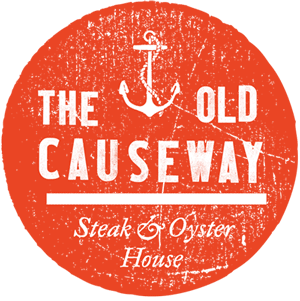The history and importance of locally harvested clams
It all started with the clam.
As we dive into another amazing LBI summer with six Tide Table eateries serving all manner of fresh seafood, we have to remember that it all began with co-owner Bob Nugent clamming during his summers in high school.
Bob Nugent’s early clamming operation. Courtesy Nugent.
Clams have always been an amazing resource of our bay. The native Americans, who called them quahogs, would not only harvest them for food but later used the dark purple parts of the shell as a form of currency. It didn’t take long for the first settlers to start using the clams themselves and they incorporated them into European-style food traditions.
Bob graduated in 1970 and continued to work the bay. He’d sell his catch to local distributors and then got into the distribution game himself. He and Fred Rebman set up a shop out of Rebman’s house on the bay in Ship Bottom. They eventually outgrew that spot and moved their operation to Cedar Bonnet Island and bought Skipper’s Seafood on Rt. 72 in Barnegat where clams were sorted and bagged. Some were sold to local restaurants.
“I used to bartend all night at the Port Hole and then drive out to Century Seafood in Philly with 40 or 50,000 clams,” remembers Bob.
Also, known as “hard clams” to decipher between “soft shell” or “ipswitch clams", It was a year-round business and the clammers would break ice to get out. At one point they were harvesting 50 to 100,000 clams on a good day.
Harvesting wild clams on the bay. Photo courtesy of Scales.
In 1981 he opened Ship Bottom Shellfish. The clam was the centerpiece of his menu. He got so busy the first month that he called his (then) girlfriend Ginna, who was in California and told her he needed help. It was officially the family business. Ship Bottom Shellfish just started its 38th summer.
It was about this time that the health of the bay began to deteriorate and the number of clams dwindled.
Clams are filter feeders. They eat nutrients and keep them from becoming too plentiful, which can suck all the oxygen from the water and threaten other animal life. They are very high in protein and low in fat, especially when eaten raw. Of course clams on the half was a staple when Shellfish opened with steamed clams and stuffed clams. The garlic clams became an LBI tradition, specifically with jumbo lump crabmeat.
Today, most local clams are produced via aquaculture.
Barnegat Bay provides. Photo courtesy of Scales.
“In the 70s there was an area of bay called the Goosebar. It was famous for clam seeds. But the bay became less productive and the industry made the big shift from hunter/gatherer to farming in the late 70s. And a lot of the technology worldwide was developed here,” says Chris Scales of Shoemaker Littlenecks. He purchased the business in 1997.
He explains that scientists on Cape Cod used studied shellfish in the late 1800s. There wasn’t a need yet but the information they collected was valuable to the Virginia Institute of Marine Services in developing the techniques of spawning clams that are grown locally today.
Shoemaker Clams is a distributor. There are about 12 full time baymen who form a lose co-op that he works with. He markets and sells the clams to all of our restaurants.
Seed clams. Photo courtesy of Scales.
The seeds are set on leases in the bay. The challenge is protecting them from predators, specifically rays and crabs. Today, clammers use a sort of screening on the bottom. After two or three years, they are harvested as littlenecks. Occasionally, they harvest the same area a year later for middle and topnecks.
Local diggers also harvest wild chowder clams that they sell to Mud City, Ship Bottom Shellfish and the Black Whale.
For a period, a lot of different clammers and investors got into clam farming creating too many clams and driving down the price. Scales compares it to the situation with cranberry farmers. But with the recent attention to oysters, the clamming has balanced out. Although there are factors and lean years, local baymen are still able to make a living growing clams and the consumer is paying a fair price. Currently the local clammers are waiting for clams to reach the next harvestable size.
Today the Garlic Clams have become something of a signature dish at Shellfish, the Black Whale and Mud City. The Clam Strips at the Black Whale are hand-shucked and battered. Occasionally we do a delicious Fried Wholebelly Clam appetizer. There are clams in the Boathose Bouillabaisse at Parker’s Garage. Fresh clams are such an important part of both the red and white clam sauce at Mud City as well as the Cioppino.
Clams on the half shell are a staple at the OC Raw Bar. Photo: Tesi
“It’s a traditional food. I think some older locals associate clams as something you eat when you’re broke. Because there were always plenty of cheap clams around,” Scales laughs, “But visitors to the area associate it with the Shore Area and they think of it as a delicacy.”





